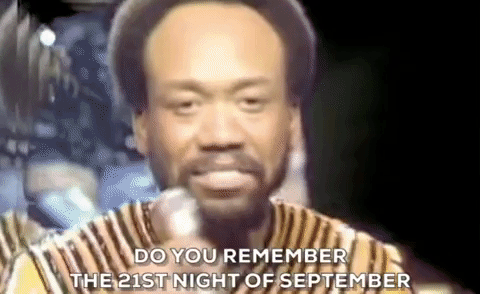Dalia Savy
Sadiyya Holsey
Jillian Holbrook
AP Psychology 🧠
334 resourcesSee Units
Memory is the recalling and retaining of information and past experiences.
Cognitive Processes
How do our minds process all of the internal and external stimuli around us? We can consciously or unconsciously process information cognitively.
Effortful vs. Automatic Processing
Effortful processing is the active processing of information that needs sustained conscious effort. Although learning with effortful processing requires attention, it can be useful for learning new information, developing skills, or solving complex problems. For example, if you decide that you want to play a brand new musical instrument like the violin, it takes effortful processing to practice and rehearse reading a piece of music, figuring out different string positions, and moving the bow. 🎻
Automatic processing is the unconscious processing of well-learned material. It is similar to the term “muscle memory” because a task is performed habitually without significant thought. Tying a shoe, riding a bike, or driving a car are all examples. Or consider an experienced knitter working on a scarf. Their mind can wander while simultaneously knitting because they have knitted scarves many times in the past, allowing them to work without actively paying attention 🧣
Effortful Processing | Automatic Processing |
|
|
Deep vs. Shallow Processing 💭
Deep processing is processing information with consideration to its meaning. Deep processing creates stronger memories because it involves elaborative rehearsal, creating a more meaningful analysis. 🤔
Shallow processing is not as involved as deep processing. It uses surface characteristics to process information. The two types of shallow processing are:
- Structural—encoding information with the use of visual and physical characteristics. 👀
- Phonemic—encoding information using auditory characteristics.👂
Deep Processing | Shallow Processing |
|
|
Selective vs. Divided Attention
Selective attention is the ability to focus your conscious awareness on a particular stimulus while blocking out competing stimuli. An important concept of selective attention is the cocktail party effect. The cocktail party effect is the ability to focus on a single speaker in a noisy environment. For example, if you are at a party, you can listen to your friend speaking while ignoring everyone speaking around you, despite their volume.
Divided attention is the ability to focus on multiple stimuli simultaneously. It is also referred to as multitasking. An example would be singing a song while doing the dishes 🎶🍽️
Divided attention decreases the amount of attention placed on one task if there is more than one. For example, if you are on the phone with your friend while doing your homework, and your friend asks you a question, your attention to your homework decreases.
Selective Attention | Divided Attention |
|
|
Metacognition
Metacognition is the ability to control and be aware of your own thoughts. An example of metacognition would be realizing you know the answer to a question on the quiz even though you cannot think of the answer at that moment, which prompts you to decide you should return to it later with a fresh perspective. Metacognition is a useful skill to have because it helps you become more aware of your own learning and thinking processes, and it can help you develop more effective strategies for retaining information and problem-solving. It can also help you become more self-regulated and independent in your learning, which can be especially helpful in academic or work-related tasks!
Memory
Short-term memory
Short-term memory is the type of memory that can only be stored for a brief period of time (about 30 seconds). The capacity of short-term memory is limited. An example of short-term memory would be retaining the phone number of a store in order to be able to call that number on your cell phone. One of the reasons why cell phone numbers are seven digits (without factoring in area codes) is because the "magic number" for the capacity of short-term memory is seven plus or minus two! 📞
Long-term memory
The capacity for long-term memory is unlimited. Unlike short-term memory, long-term memory can be stored over sustained periods of time. ➡️
Explicit Memory
Explicit memory is the stored memory of facts. For example, explicit memory is knowing how many continents there are. 🌎
Explicit memory is further divided into two more categories: semantic and episodic.
- Semantic—the memory of facts, ideas, and concepts

Gif Courtesy of Tenor.
- Episodic—memories of personal experiences. An example would be telling a friend about what you ate for breakfast or the first time that you went swimming.

Gif Courtesy of Giphy.
Implicit Memory (procedural)
Implicit memory is a type of long-term memory that is remembered unconsciously. One of the most common forms is procedural memory. Procedural memory is the memory of how to do repetitive everyday tasks. Examples of procedural memories include riding a bike, tying a shoe, and driving a car. 🚗
Sensory memory (echoic, iconic)
Sensory memory involves the five senses: taste (gustation), smell (olfaction), hearing (audition), sight, and touch. It is the ability to retain information about sensory information long enough to be recognized after the original stimulus has ended. An example would be recognizing the smell of baking cookies.
Sensory memory can be further divided into two categories: echoic and iconic.
- Echoic—the memory of sound; lasts about three to four seconds (remember that sounds can echo) 👂🏾
- Iconic—the memory of visual stimuli (an image); lasts about one-quarter to one-half a second (think of this one as "eye"-conic) 👁
Prospective Memory
Prospective memory is remembering to perform an action at a certain time. An example would be remembering to take medicine after breakfast. From watering plants once a week to turning off the stove after cooking, prospective memory is an important aspect of routine daily life.

Gif Courtesy of Gfycat.
Flashbulb Memory
Flashbulb memory is a clear memory of an emotionally significant event. Like an exceptionally vivid 'snapshot' of a moment in time, flashbulb memories are believed to be highly detailed, clear, and accurate. However, flashbulb memories are not necessarily more accurate than other types of memories, as they are susceptible to change and influence by a person's prior knowledge and expectations. An example of a flashbulb memory for many American citizens is the attacks on September 11th, 2001.
🎥Watch: AP Psychology - Cognition + Memory
Browse Study Guides By Unit
🔎Unit 1 – Scientific Foundations of Psychology
🧠Unit 2 – Biological Basis of Behavior
👀Unit 3 – Sensation & Perception
📚Unit 4 – Learning
🤔Unit 5 – Cognitive Psychology
👶🏽Unit 6 – Developmental Psychology
🤪Unit 7 – Motivation, Emotion, & Personality
🛋Unit 8 – Clinical Psychology
👫Unit 9 – Social Psychology
🗓️Previous Exam Prep
📚Study Tools
🤔Exam Skills

Fiveable
Resources
© 2025 Fiveable Inc. All rights reserved.